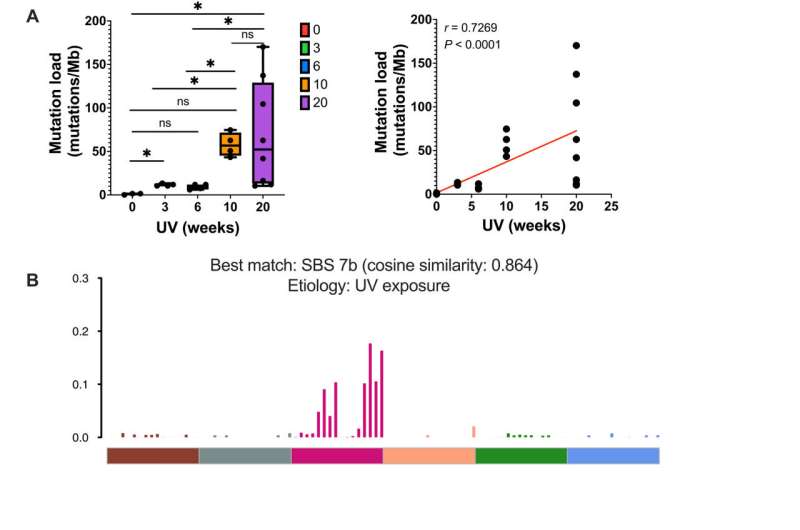This article has been reviewed according to Science X's editorial process and policies. Editors have highlighted the following attributes while ensuring the content's credibility:
fact-checked
peer-reviewed publication
trusted source
proofread
Cancer may lurk in 'normal looking' skin

A University of Queensland study has found skin with few visible freckles or blemishes may still carry sun-damaged DNA mutations that can trigger cancer. Researchers from UQ's Frazer Institute Dermatology Research Center investigated the relationship between the number of mutations found in 'normal looking' skin and the number of a person's past skin cancers.
Lead author and Ph.D. candidate Ms. Ho Yi Wong said the findings show Australians can still have a high number of mutations in skin they think looks normal. The study is published in the journal Science Advances.
"We took skin samples from the forearms of 37 skin cancer patients which were frequently sun exposed," Wong said. "They had an average of 4–5 times more mutations in normal looking skin compared to similar studies overseas.
"The higher mutation levels are likely due to Australia having 2–4 times higher levels of ultra-violet light than the United Kingdom and Europe."
The study next matched people of the same age and sex who had a different number of skin cancers.
"One group had many skin cancers and the other group had few to none in the past five years," Wong said. "We found a 45% difference between the groups, with a much larger number of mutations on the forearms of those with more skin cancers."
About two-thirds of Australians will develop a skin cancer during their lifetime, and Queensland leads the world in common skin cancers such as basal and squamous cell carcinomas.
Senior author Professor Kiarash Khosrotehrani said the findings explain in part why people with a single skin cancer have a much higher chance of developing others in the same area of the body in the future.
"The findings also suggest that if we reduce mutation levels in normal looking skin then we could reduce the risk of new skin cancers," Professor Khosrotehrani said. "We found laser treatments and dermabrasion can 'wipe away' skin mutations and reduce the risk of skin cancer, but this approach is not applicable to everyone.
"Lasers and dermabrasion are difficult and expensive to implement at large scale, which is why other therapies are needed. Our next step is to explore therapies that can reduce the load of skin mutations."
More information: Ho Yi Wong et al, Epidermal mutation accumulation in photodamaged skin is associated with skin cancer burden and can be targeted through ablative therapy, Science Advances (2023). DOI: 10.1126/sciadv.adf2384



















